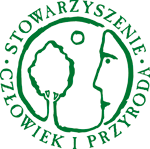From March 8th to March 15th, a study visit to Spain took place. Three people from the Association took part in it - Anna Krzysztofiak, Dominika Rupp-Janecka and Tomasz Janecki, who visited the places of two projects funded by the EU within the LIFE +.
In the Basque Country, on the area of the Izki National Park, a project ‘PRO-Izki - Ecosystem Management of Izki pyrenaika Quercus forest and habitats and species of community in terest related to it’ is being implemented. Located on a plateau surrounded by mountains, the park is mainly associated with oak Quercus pyrenajka. In the park’s forests one can meet plenty of rare and endangered species such as Bechstein's bat Myotis bechsteinii or the Agile frog Rana dalmatina. What we found particularly in teresting, was seeing amphibians’ species that can’t be seen in Poland, such as: Common midwife toad Alytes obstetricans, Mmediterranean tree frog Hyla meridonalis, Palmate newt Lissotriton helveticus and Marbled newt Triturus marmuratus.
We were warmly welcomed by the team executing the project, who spent a lot of time to present us the project and the major attractions of the Izki Park. The project tested various ways of managing oak forests in designated plots with a total area of 210 ha. It is, above all, about in creasing the germination of seeds and the strengthening of Pyrenean oak trunks, which will be able to put more resistance to acidophilous beeches. As far as protection of the amphibians from local populations is concerned, our hosts primarily achieve it by restoring small water reservoirs, essential for the amphibians to breed and for the larval to develop in . We were impressed by the flowering Helleborus (two species) and Egyptian vultures passing massively over our heads.
From the Basque Country we moved to Catalonia, where until recently a project called "PROYECTO ESTANY - Improvement of the Natura 2000 habitats and species found in Banyoles: a demonstration project" was implemented. Activities, which ended in December 2013, focused mainly on stabilization of populations and habitats of species found in the Natura 2000 ‘Estany de Banyoles’ . The European pond turtle Emys orbicularis , the Spanish pond turtle Mauremys leprosa , the Mediterranean Barbel Barbus meridionalis and the freshwater mussel Unio elongatulus were the species in cluded in to the protective activities. What we found in teresting, was the information about how to control in vasive plant species, such as the Giant cane Arundo donax - a gigantic grass reaching up to over 5 m high, or the Japanese honeysuckle Lonicera japonica with annual growth rings of 1-2 m (grows up to 5 meters high). In here, as well, we were warmly welcomed and learned a lot about many in teresting protective activities.
Summing up, we were able to achieve the objectives set before the departure, such as getting familiar with the activities of active protection of amphibians and wetland habitats. What we found especially valuable about the trip was to establish contacts with professionals dealing with issues similar to ours, the exchange of information both on the methods of nature protection and project management, as well as joint plans for our next year's activities – we’ve managed to obtain promises from a number of people from Spain to participate in the conference we plan to organize next year.

























